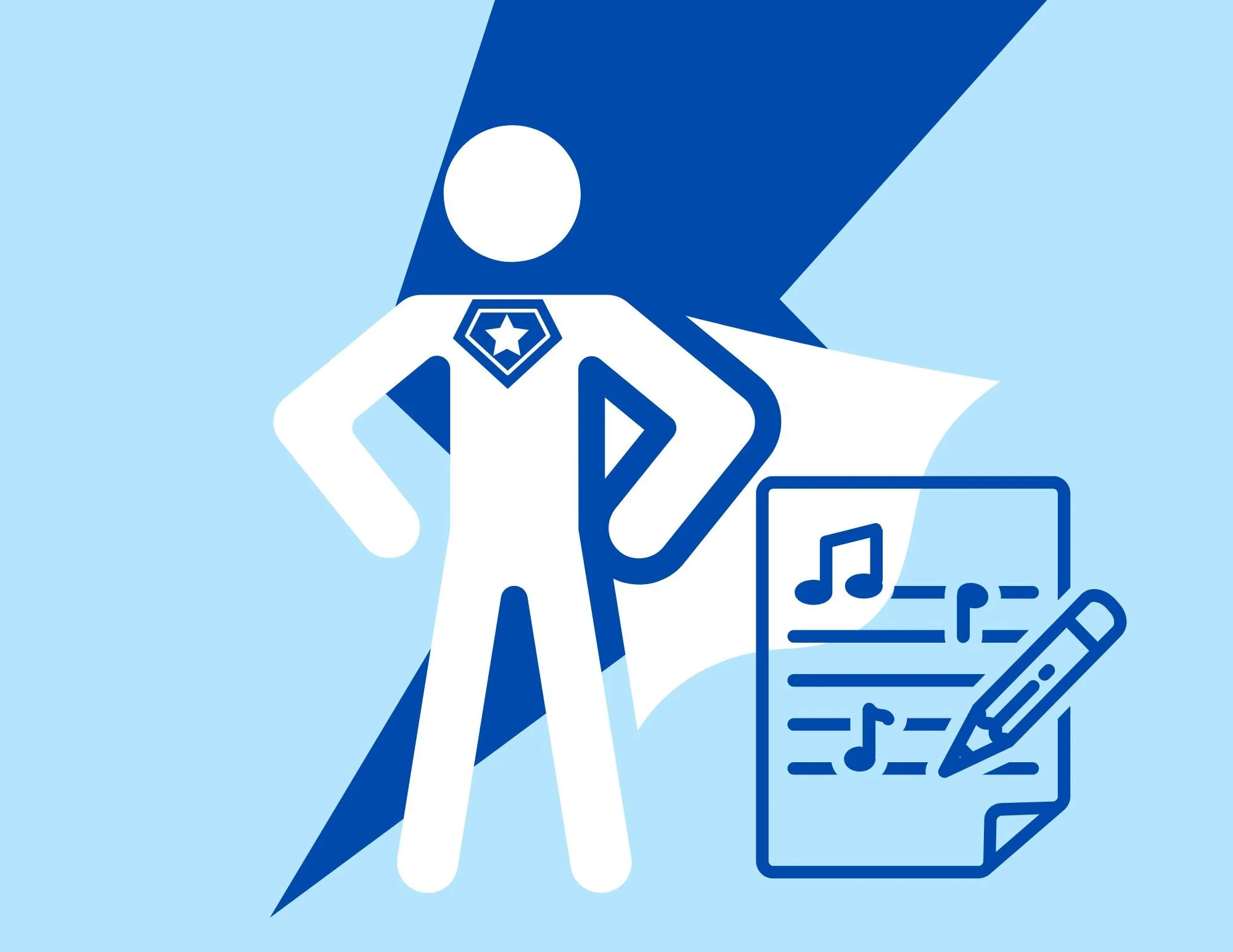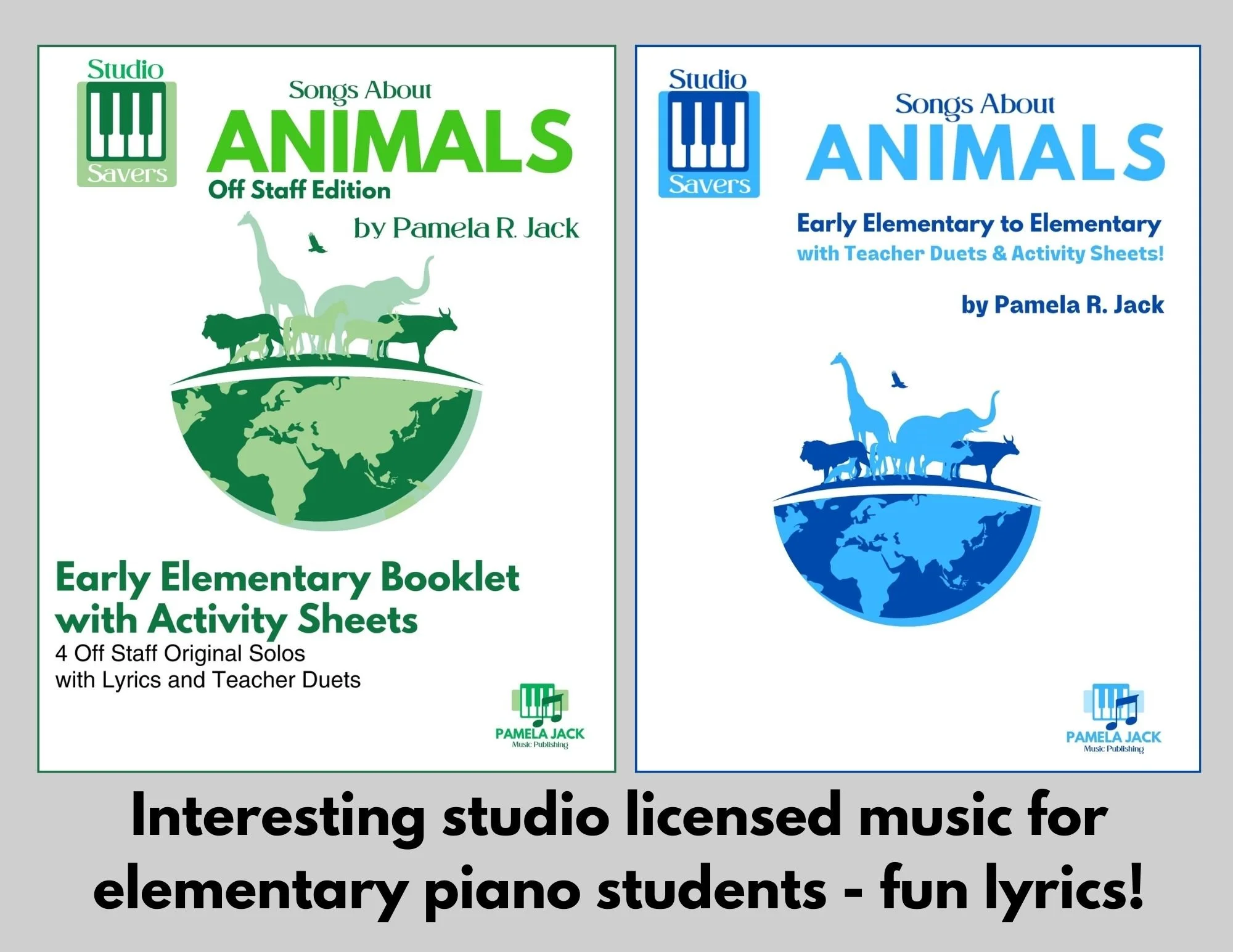Lyrics - A Superpower for piano teachers everywhere!
Why do people love stories? Because stories are at the heart of what we do. Stories entertain us, teach us, and help us escape into different worlds. Stories make us feel things deeply. They draw out laughter, tears, and moments of reflection. Stories ignite our imagination and leave us yearning for more. Most importantly, stories help us remember—not just the details of a tale but the emotions and lessons tied to it.
It is in this remembering that makes lyrics in good elementary piano music a real superpower! When students relate to the lyrics, they connect emotionally to their piece. That connection transforms their playing from a mere technical exercise to an expressive and engaging experience. As the student connects with the lyrics, they remember not just the music but the joy, the story, and even the moment - instant superpower!
Lyrics offer more than emotional engagement. Lyrics are an incredible teaching tool. Rhyme and rhythm actually make things easier to memorize. From nursery rhymes to catchy jingles, our brains latch onto the pattern and structure of words set to rhythm. When students sing or speak the lyrics of their piano pieces, they internalize the rhythm and phrasing of the music. This helps them play more fluently and naturally, since the rhythm becomes something they actually feel, and not just notes they read on the page.
Lyrics also enhance creativity and imagination for the student. Lyrics can paint vivid pictures as they tell their story. When students engage with the stories, they can bring the music to life in a way that’s uniquely their own. A piece like "No Bedtime Tonight" becomes more than notes on a page; it’s a playful portrayal of a child’s New Year’s Eve adventure. Or take "Wolf Serenade"— The lyrics invite students to imagine a moonlit forest, with wolves howling their mysterious song. This imaginative connection makes practice more fun and meaningful.
Another benefit of lyrics in elementary piano music is how they encourage active participation. Students who speak or sing the words are engaging multiple senses: students see the notes, hear the rhythm, and feel the words as they speak or sing. This multisensory learning approach deepens the student’s understanding and helps them retain what they’re learning.
Try it with your students. Ask your students to speak or sing the lyrics of their pieces. Start with something light and playful, like "New Kittens" from my Songs About Animals collection. “New Kittens” is included in both an on staff and an alpha note (off staff) collection so even the earliest beginners can enjoy this cute piece about playful, adorable new kittens! You’ll see for yourself - how much easier it is for musicians to grasp the rhythm and phrasing. Watch their faces light up as they connect with the story behind the music.
For teachers, having pieces with lyrics in your studio library is invaluable. They’re not only fun but also pedagogically rich. The Songs for Holidays and Songs for Autumn collections are filled with lyrical pieces that students adore. Whether it’s the whimsical "It’s Good to Be a Peacock on Thanksgiving Day" or the hauntingly beautiful "Wolf Serenade," these pieces bring the magic of storytelling into your lessons.
If you haven’t been using lyrics in your teaching, give it a try. Now is the perfect time to start. Explore the collections I’ve created, and see how lyrics can transform your students’ learning experience. Remember, stories make us laugh, cry, and feel—and they can make our music come alive, too.





